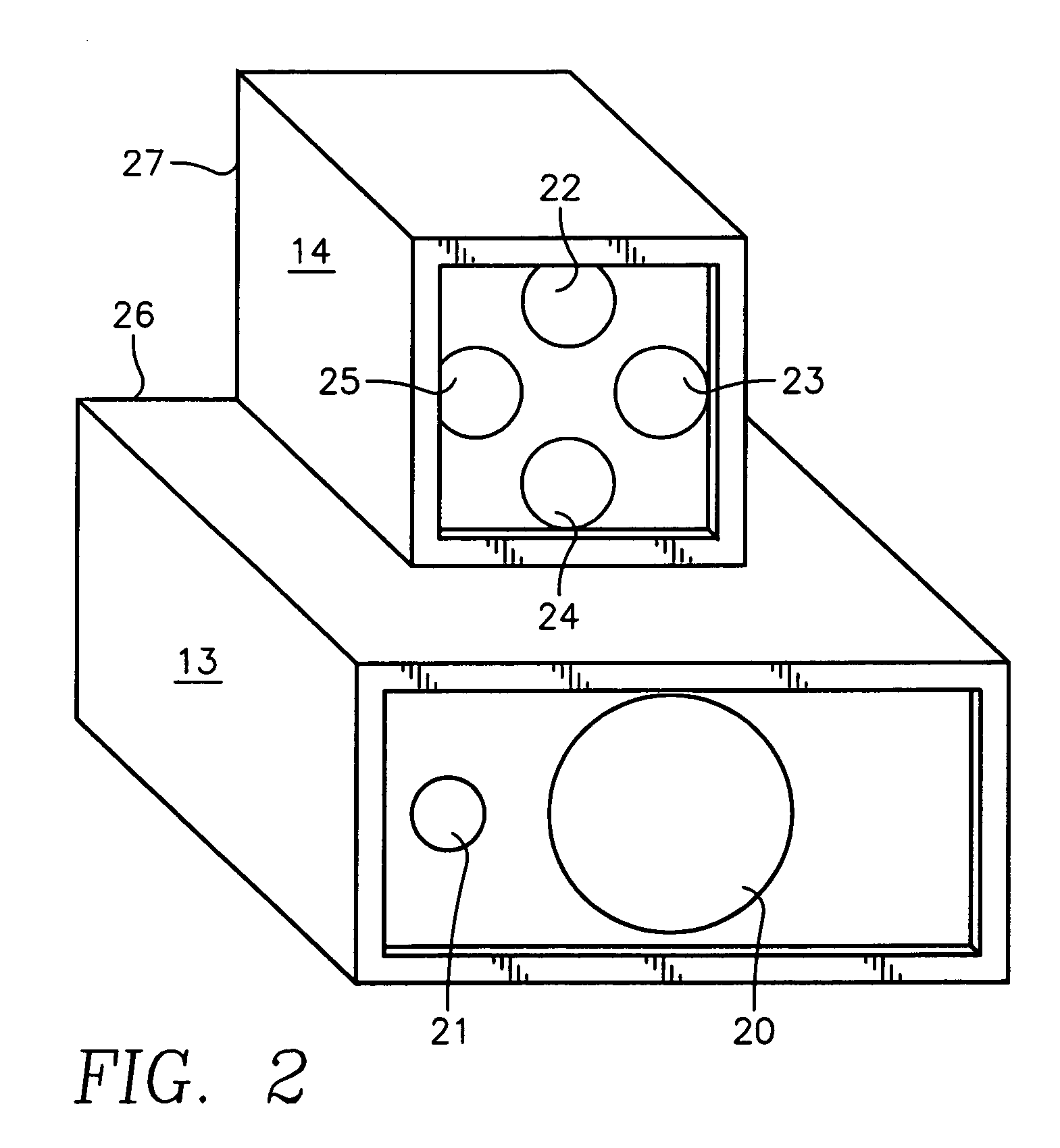Laser aim scoring system
a scoring system and laser technology, applied in direction controllers, training adaptation, instruments, etc., can solve the problems of limited target ranges, bore sighting of existing miles training systems, and extreme limitations in field training using live training rounds, while the preferred method is used
- Summary
- Abstract
- Description
- Claims
- Application Information
AI Technical Summary
Benefits of technology
Problems solved by technology
Method used
Image
Examples
Embodiment Construction
[0011]Referring to FIG. 1, there is shown a complete layout of the operating system of the present invention. The system operates on the principle that the success of the target engagement is directly related to the ability of the laser designator operator (the gunner) to properly aim the laser, near or on the target, at appropriate times during the flight of the missile. The drawing portrays a helicopter 10 or flying platform, which usually involves autonomous designations, i.e. the same platform both designates the target and launches the laser-guided munitions. The same concept can involve ground-based designators and ground based munitions. The system also supports buddy lasing, where either a ground gunner or air platform designates the target, or another platform launches the weapon. The target 11 is a flat pop-up board painted to provide the same contrast with the background, as would a real target. An active test monitor 12 is placed in front of the target far enough away an...
PUM
 Login to View More
Login to View More Abstract
Description
Claims
Application Information
 Login to View More
Login to View More - R&D
- Intellectual Property
- Life Sciences
- Materials
- Tech Scout
- Unparalleled Data Quality
- Higher Quality Content
- 60% Fewer Hallucinations
Browse by: Latest US Patents, China's latest patents, Technical Efficacy Thesaurus, Application Domain, Technology Topic, Popular Technical Reports.
© 2025 PatSnap. All rights reserved.Legal|Privacy policy|Modern Slavery Act Transparency Statement|Sitemap|About US| Contact US: help@patsnap.com



